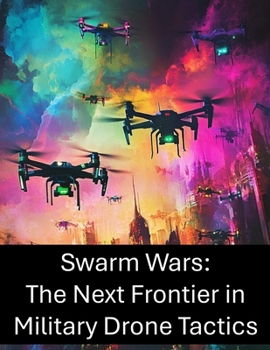Swarm Wars: The Next Frontier in Military Drone Tactics
Swarm warfare is an emerging military strategy that leverages the collective capabilities of multiple unmanned aerial vehicles (UAVs) to achieve operational goals. This concept draws upon biological principles observed in nature, particularly the coordinated behaviors seen in swarming species such as fish and birds. By mimicking these patterns, military forces can deploy drones that work in unison, enhancing their effectiveness in reconnaissance, targeting, and engagement missions. The concept hinges on the ability of these drones to communicate and make autonomous decisions in real time, creating a dynamic and adaptable force on the battlefield.
At the core of swarm warfare is the utilization of advanced algorithms and artificial intelligence, enabling drones to operate under a unified command while maintaining individual autonomy. This allows for flexibility in tactics, as the swarm can respond to threats or opportunities as they arise. The integration of AI into drone swarms also facilitates rapid data processing and decision-making, essential for executing complex military operations. As a result, swarm warfare not only increases operational efficiency but also poses significant challenges for adversaries who must contend with multiple, dispersed targets.
Ethical implications of swarm warfare are a critical consideration for military strategists and policymakers. The autonomous nature of drone swarms raises questions about accountability and the potential for unintended consequences. As these systems become more prevalent, there is a pressing need for regulations that govern their use, ensuring that they are employed in a manner consistent with international humanitarian law. Additionally, the psychological impacts of swarm tactics on enemy forces and civilian populations must be assessed, as the overwhelming presence of drones can induce fear and confusion.
Technological innovations continue to drive the evolution of swarm warfare, with advancements in drone design, propulsion systems, and communication networks. These innovations not only enhance the capabilities of drone swarms but also expand their operational range and endurance. Military training for drone operators is adapting to these changes, emphasizing the need for personnel to understand swarm dynamics and the strategic implications of deploying such technology in combat scenarios. The future of military engagements may increasingly rely on these systems, making proficiency in swarm tactics essential for modern forces.
Looking ahead, the potential applications of drone swarms extend beyond traditional military operations. Humanitarian missions could benefit from these technologies, providing rapid response capabilities in disaster relief and search-and-rescue operations. However, as drone swarms become more integrated into various sectors, ongoing dialogue about their ethical use and regulatory frameworks will be crucial. The development of effective countermeasures against hostile drone swarms will also be a vital area of focus for military establishments worldwide, underscoring the need for continual adaptation in the face of evolving threats.
At the core of swarm warfare is the utilization of advanced algorithms and artificial intelligence, enabling drones to operate under a unified command while maintaining individual autonomy. This allows for flexibility in tactics, as the swarm can respond to threats or opportunities as they arise. The integration of AI into drone swarms also facilitates rapid data processing and decision-making, essential for executing complex military operations. As a result, swarm warfare not only increases operational efficiency but also poses significant challenges for adversaries who must contend with multiple, dispersed targets.
Ethical implications of swarm warfare are a critical consideration for military strategists and policymakers. The autonomous nature of drone swarms raises questions about accountability and the potential for unintended consequences. As these systems become more prevalent, there is a pressing need for regulations that govern their use, ensuring that they are employed in a manner consistent with international humanitarian law. Additionally, the psychological impacts of swarm tactics on enemy forces and civilian populations must be assessed, as the overwhelming presence of drones can induce fear and confusion.
Technological innovations continue to drive the evolution of swarm warfare, with advancements in drone design, propulsion systems, and communication networks. These innovations not only enhance the capabilities of drone swarms but also expand their operational range and endurance. Military training for drone operators is adapting to these changes, emphasizing the need for personnel to understand swarm dynamics and the strategic implications of deploying such technology in combat scenarios. The future of military engagements may increasingly rely on these systems, making proficiency in swarm tactics essential for modern forces.
Looking ahead, the potential applications of drone swarms extend beyond traditional military operations. Humanitarian missions could benefit from these technologies, providing rapid response capabilities in disaster relief and search-and-rescue operations. However, as drone swarms become more integrated into various sectors, ongoing dialogue about their ethical use and regulatory frameworks will be crucial. The development of effective countermeasures against hostile drone swarms will also be a vital area of focus for military establishments worldwide, underscoring the need for continual adaptation in the face of evolving threats.
Format:Paperback
Language:English
ISBN:B0FJ7G86BH
ISBN13:9798293254446
Release Date:July 2025
Publisher:Independently Published
Length:64 Pages
Weight:0.38 lbs.
Dimensions:0.1" x 8.5" x 11.0"
Customer Reviews
0 rating





